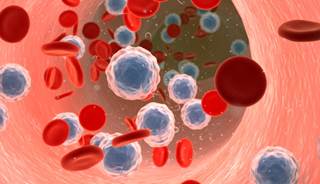
Diagnosed with Cancer? Your two greatest challenges are understanding cancer and understanding possible side effects from chemo and radiation. Knowledge is Power!
Learn about conventional, complementary, and integrative therapies.
Dealing with treatment side effects? Learn about evidence-based therapies to alleviate your symptoms.
Click the orange button to the right to learn more.
Watch and Wait in Non-Hodgkin Lymphoma

Watch and wait in Non-Hodgkin Lymphoma (NHL) is finally here. I say finally because “deintensifying treatment” has come to many other forms of cancer including prostate cancer. Years ago.
Let me be fully transparent. Watch and wait is for low-grade NHL . Early stage cancers only are eligible for a watch and wait treatment plan.
“Watch and wait” is somewhat of a misnomer in my experience. While the patient may want to wait before undergoing any conventional therapies, they should “pre-habilitate” with evidence-based non-conventional therapies including:
- Anti-angiogenic nutrition
- Anti-angiogenic supplementation
- Lifestyle therapies such as exercise.
According to research, prehabilitation before any/all cancer therapies will enhance your response to therapy if you ever do choose to treat your NHL. Prehabiitation is tailor-made for watch and wait in NHL.
I was diagnosed with a pre-cancer stage of cancer. My cancer, multiple myeloma- also a blood cancer. My point is that my oncologist told me that there was nothing that I could do. I now know that my onc. was wrong.
While I probably would have progressed to full myeloma, I would have responded to therapy better when I underwent induction therapy and may have avoided many of the side effects that I now live with.
Have you been diagnosed with low-grade non-hodgkin lymphoma? If you would like to learn more about taking a watch and wait therapy plan, email me at David.PeopleBeatingCancer@gmail.com
Thank you,
David Emerson
- Cancer Survivor
- Cancer Coach
- Director PeopleBeatingCancer
Watch and wait for Non-Hodgkin Lymphoma (NHL)
“What is watch and wait (active monitoring)?
If you have low-grade non-Hodgkin lymphoma (NHL), your doctor may suggest you do not need to start treatment straight away.
Instead, you have regular tests and appointments to monitor the lymphoma and check for signs that you need to start treatment. This is called watch and wait. It may also be called active surveillance or active monitoring. It is a way of delaying treatment until it is needed.
Your doctor may suggest watch and wait if:
- you have low-grade lymphoma and do not have symptoms
- low-grade lymphoma has come back after treatment but is not causing problems.
Low-grade lymphoma often develops slowly and you may not need treatment for a long time.
Sometimes people worry about not having treatment straight away immediately. But there can be advantages to delaying treatment.
Advantages of watch and wait
- Studies have shown that people who delay treatment until it is needed often live as long as people who start treatment straight away. They also respond just as well to treatment.
- You will avoid the risk of treatment side effects, for as long as possible.
- Effective treatments can be kept in reserve for you until they are needed.
- Low-grade lymphoma can go through periods when it is more active and others when it is stable or even shrinks. In some people, the lymphoma shrinks without any treatment. This is called spontaneous regression.
Monitoring lymphoma
Even when you are not having any treatment for lymphoma, you will still see your cancer specialist regularly. At each appointment, they will check you for signs that you may need to start treatment. These signs might include:
- unexplained weight loss, severe night sweats or unexplained fever (B-symptoms)
- a lower than normal number of red blood cells (anaemia), white blood cells or platelets in your blood
- the lymphoma starting to grow quickly
- the lymphoma starting to affect an important organ, such as a kidney
- the lymph nodes getting bigger and bulky
- a build-up of fluid in the tummy area (ascites) or in the lining of lungs (pleural effusion).
Coping with watch and wait
If you are worried about delaying treatment, here are some helpful tips:
- Make sure you understand why watch and wait is recommended and what other treatment options there may be. If you have any concerns, talk to your doctor.
- Think of your time without treatment as an opportunity to make the most of a good quality of life. Use it to do things you enjoy and to get as fit and healthy as you can. We have more information about maintaining a healthy lifestyle.
- Try to focus on the present rather than what might happen in the future.
- Express your feelings – you can do this by talking to family and friends, joining a support group or online forum, or by keeping a journal.
Although watch and wait can be difficult to adjust to at first, many people find it gets easier with time.

